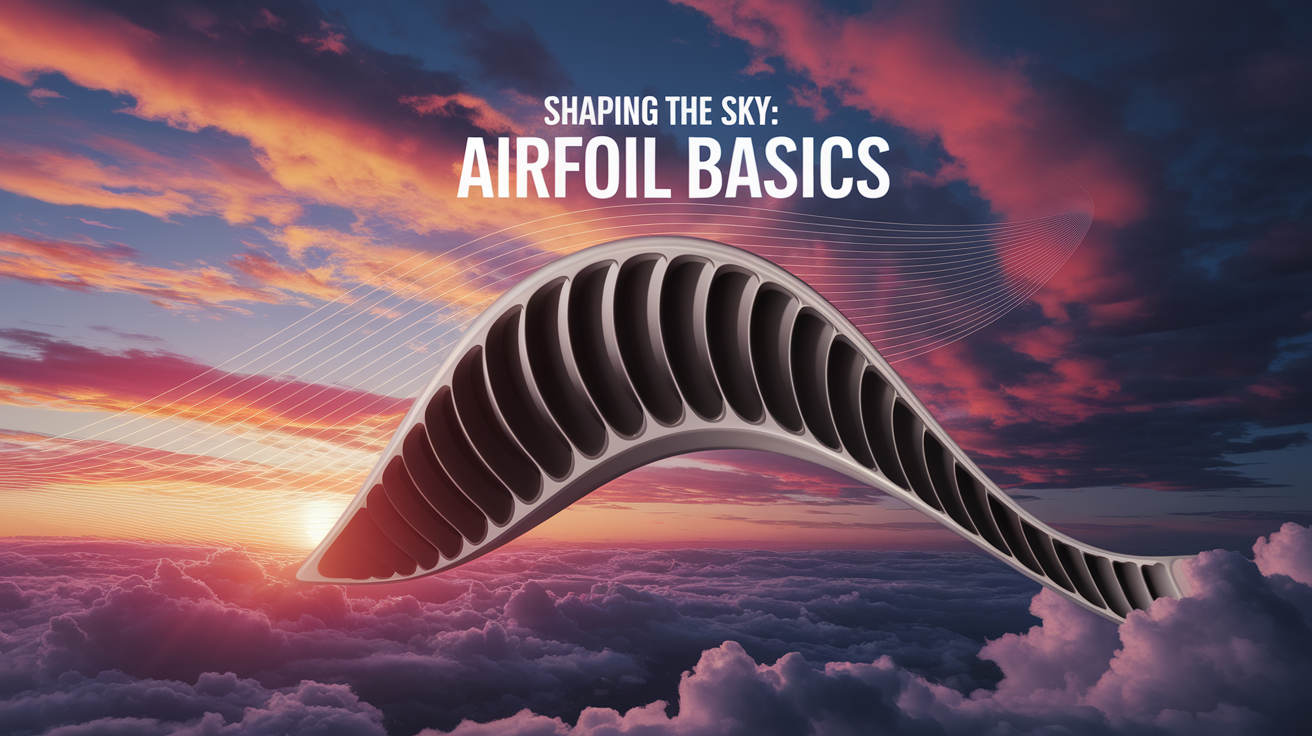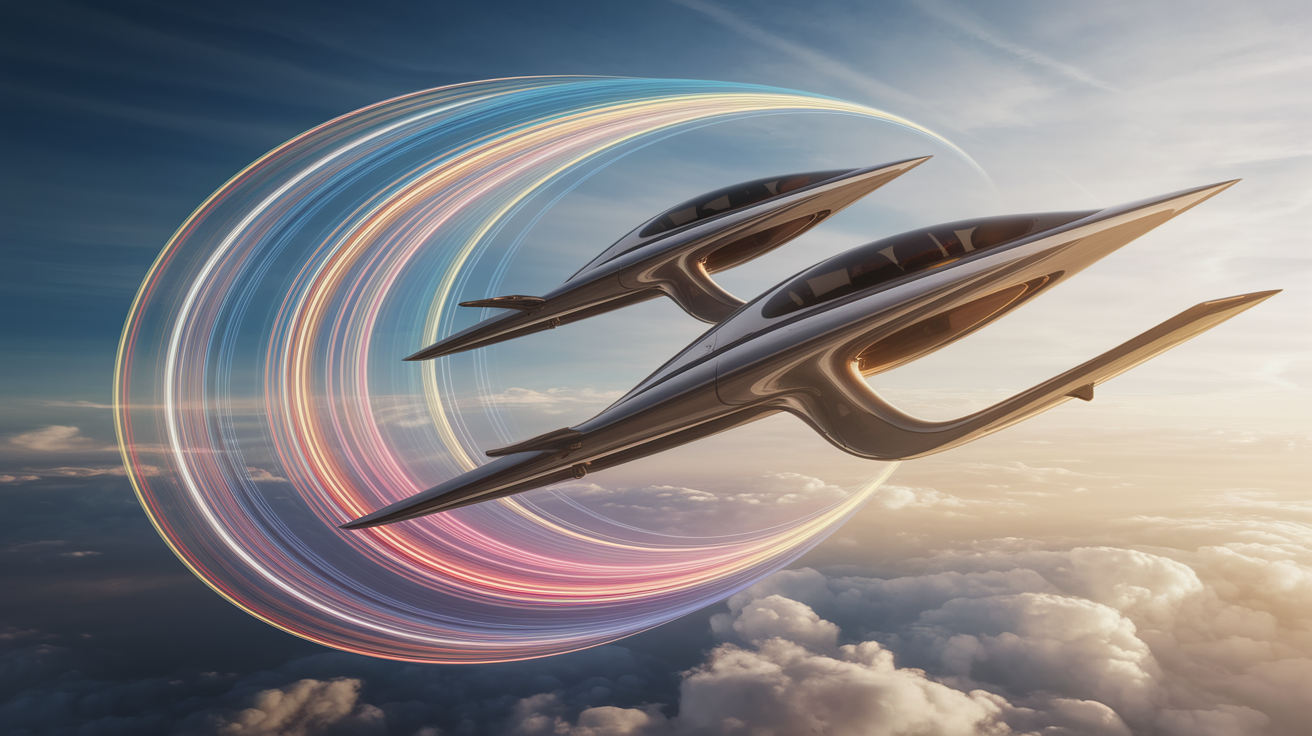Quick Answer: Airplane wings generate lift by pushing air downward and creating pressure differences between their upper and lower surfaces. This is achieved through the wing’s shape, called an airfoil, and its angle of attack, which together control how airflow moves and produces the upward lift force needed for flight.
Liftoff Launchpad
To keep an airplane in the sky, its wings must produce an upward force called lift that overcomes the aircraft’s weight. Lift is one of the four main aerodynamic forces — alongside thrust, drag, and weight — in aviation physics. In simplest terms, lift comes from the wing redirecting airflow downward. According to Newton’s Third Law, the air pushes back up with an equal and opposite reaction force, holding the airplane up in the air.

Both surfaces of the wing — the top and the bottom — play important roles in shaping this airflow and generating the necessary pressure differences to sustain flight.
Shaping the Sky: Airfoil Basics
The special cross-sectional shape of a wing is called an airfoil. Most airplane wings are curved on top and flatter on the bottom. This shape is not arbitrary — it guides air to flow faster over the curved upper surface and slower underneath, creating a pressure difference that lifts the wing.

- Curved upper surface: Accelerates air, lowering air pressure above the wing.
- Flatter lower surface: Maintains relatively higher air pressure below the wing.
- Camber: The measure of a wing’s curvature — more camber can increase lift at lower speeds.
Interestingly, even flat or slightly curved surfaces — like boat sails — can produce lift by redirecting airflow, proving that wing lift isn’t only about “curved on top, flat on bottom.”
Newton in the Clouds: Flow Turning and Reaction Forces
While wing curvature plays a major role, lift is also fundamentally about flow turning. As a wing moves, it deflects a mass of air downward — this redirected airflow is called downwash. In response, the air produces an upward reaction force on the wing.

- Air coming in front of the wing tilts upward slightly (upwash).
- As it passes over and under the wing, the airflow is bent downward.
- The combined effect of this turning, plus variations in speed and pressure, produces lift.
In this view, Bernoulli’s principle and Newton’s laws work hand-in-hand. Pressure differences can be explained by faster-moving air over the top and slower under the bottom, while Newton’s laws explain the mechanics of pushing air down to get an equal upward push.
Fine-Tuning Lift: Angle of Attack and the Kutta Effect
The angle of attack (AoA) — the angle between a wing’s chord line (from leading edge to trailing edge) and the oncoming airflow — is critical in controlling lift force. Increasing AoA generally increases lift because the wing turns the air more sharply downward and increases the pressure difference.

- Low AoA: Produces steady lift with low drag.
- Moderate AoA: Increases lift without much stall risk.
- High AoA: Can cause a stall — where airflow separates from the wing, suddenly cutting lift.
The Kutta effect helps ensure that air smoothly leaves the trailing edge of the wing, “sticking” to the contour and maintaining continuous lift production. This effect is one reason why even subtle changes in wing shape or control surfaces can have a big impact on flight mechanics.
Busting Myths: Beyond Equal Transit Time
One of the most common misconceptions is the so-called “equal transit time” explanation — that air splitting at the wing’s leading edge must rejoin at the trailing edge at the same time, forcing faster flow over the top. Experiments show this is simply not true.

In reality, upper surface airflow can reach the trailing edge much sooner than air passing underneath. The real contributors to lift are:
- Pressure differences from varying airspeeds.
- Flow turning and downwash effects that apply Newton’s Third Law.
- Airfoil geometry and surface smoothness enhancing consistent flow.
If you want to explore a clear myth-busting discussion on this topic, the University of Cambridge has an excellent resource, as well as visual tests in this demonstration video.
Touchdown Thoughts
Airplane wings generate lift through a fascinating interplay of airflow redirection, pressure variation, and precise wing design. By combining the elegance of Bernoulli’s principle with the action-reaction logic of Newton’s laws, wings transform forward motion into the upward force that makes powered flight possible. The next time you watch an aircraft rise into the sky, you’ll know it’s not magic — it’s aerodynamic engineering at its best.













